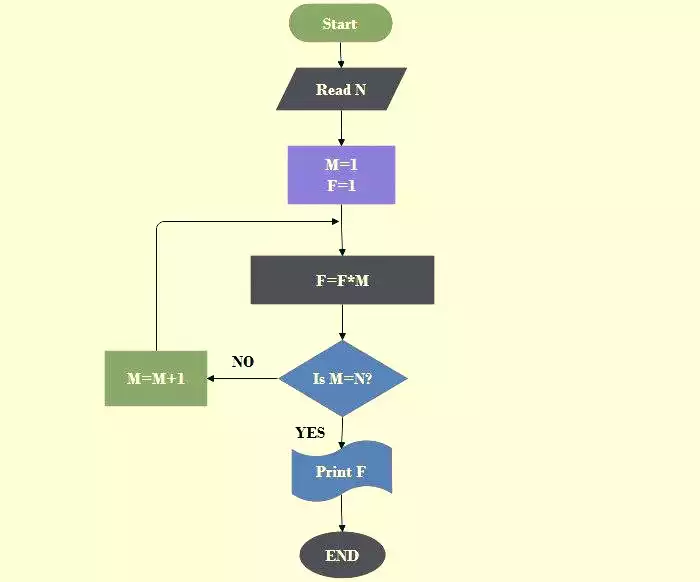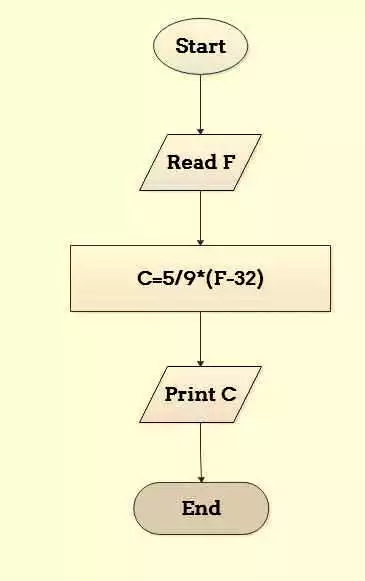An algorithm is a popular term that you’ve probably come across in a variety of contexts, including computer programming, mathematics, and even our everyday life.
An algorithm can be defined as a step-by-step process or formula for solving problems, or as a set of instructions formulated to carry out certain work. A recipe is the best example of this because it explains what must be done step by step.
Algorithms are typically built in underlying languages, which means they could be carried out in more than one programming language. Algorithms are used as specifications for data processing, math, automated reasoning, and a variety of other tasks.
In this blog, we will discuss the definition of algorithms, types of algorithms, characteristics of algorithms, and their advantages and disadvantages, etc.
Definition Of Algorithm
Table of Contents
In normal words, an algorithm describes a mathematical procedure or way to resolve an issue using a finite or definite number of steps.
According to the world of coding and computers, Algorithms are sets of instructions that assist us to resolve a problem within a definite or finite number of steps.
So, An algorithm can be defined as a set of instructions that provide a way to determine what needs to be done and how.
To better understand this definition by assuming it is like a recipe. A baker knows that there are many ways to make a cookie, but by following a recipe he knows to first preheat the oven. Next, he measures out the flour, then adds chips, butter, etc. until the cookies are ready.
Understand it now in terms of coding examples.
Programmers or software developers use algorithms to give instructions to their machines to perform a specific task.
For example:
Suppose a Programmer wants to query a database for last month’s sales data. Then the programmer queries the database for the last month’s data and compares that with the current one and analyzes the data with the same month last year, then displays the data as a bar or pie graph. All of this depends on the Algorithm that the programmer will use to complete the task.
What Are The Advantages And Disadvantages Of Algorithms?
Advantages Of Algorithm
- This is a step-by-step presentation of a solution to a given problem
- Algorithms follow a definite process
- The algorithm is easy to understand without programming knowledge because it isn’t dependent on any programming language.
- It is easy to debug algorithms since they have logical reasons for each step.
- The algorithm divides the problem into smaller ones, so that each can be solved easily.
Disadvantages Of Algorithm
- Algorithms take a lot of time
- Problems cannot be reduced to algorithms, which makes them difficult
- In the Algorithm, it is difficult to show loops and branches
Now you will learn the types of algorithms.
7 Types Of Algorithms
Here are 7 types of algorithms:
- Brute Force Algorithm
- Recursive Algorithm
- Dynamic Programming Algorithm
- Divide and Conquer Algorithm
- Greedy Algorithm
- Backtracking Algorithm
- Randomized Algorithm

Brute Force Algorithm
A brute force algorithm is essentially trying all possibilities until a result is found. It is the simplest and most basic algorithm. Moreover, these types of algorithms allow for the detection of the ideal or best solution, since they check all possible solutions.
The method can also be used to find an acceptable solution (not the best). Basically, it stops when an answer to the issue has been found. A clear way to deal with a problem is the first thing that comes to mind after observing a problem. This is the main types of algorithms.
Recursive Algorithm
Recursion is the key to this type of algorithm. A problem is resolved by breaking it down into subproblems of a similar nature and repeating the process over and over until it is resolved with the help of a base condition.
Every time it recurs, it solves the base case legitimately and then uses a more straightforward or simpler input. We use it to handle issues that can be broken down into simpler or more modest ones. It is also the main types of algorithms.
Dynamic Programming Algorithm
Algorithms of this type are also known as memoization techniques. As a result, the thought is to keep track of the recently determined result to avoid calculating it over and over again.
Using Dynamic Programming, you can break up the unpredictable issue into smaller, more manageable subproblems and put the outcome aside for later. We can say that it remembers previous results and uses them to find new ones. it is the third main types of algorithms.
Divide and Conquer Algorithm
With the Divide and Conquer algorithm, the aim is to tackle the issue in two sections, the first of which divides the problem into subproblems that are similar in nature. Second, we will approach the more modest issue autonomously and then add the combined outcome to complete our final response.
Greedy Algorithm
Next, we have a greedy algorithm, which creates the solution portion by portion. In selecting the following role, it is determined by the fact that it provides sudden help and that it never considers the options that had been assumed recently.
Backtracking Algorithm
This type of algorithm seeks a steady solution to the issue by eliminating solutions that fail to meet the requirements of the issue at any moment. As an example, it is an algorithmic procedure for handling issues recursively by attempting to construct an answer steadily, eliminating solutions that fail to meet the criteria at any moment.
Randomized Algorithm
During the computations, the algorithm uses a random number at least once for deciding the outcome. So, these are the main types of algorithms.
Characteristics Of An Algorithm
Here is a list of some of the characteristics that every algorithm should follow, which we will examine one by one.
- Input specified– During the calculation, the input is the information that needs to be changed to create the output. An algorithm should have at least 0 all-around characterized inputs. Achieving input exactness requires understanding what kind of information, how much, and what structure the information should have.
- Output specified– Calculations result in the output of information. Each algorithm ought to have at least one well-defined output, and the ideal output ought to be coordinated. The exactness of the output also requires an understanding of what kind of information, how much and how it should be structured.
- Clear and Unambiguous– An algorithm must determine each step, and each step should be obvious in all its actions and lead to only one meaning. This is the reason why an algorithm should be Clear and Unambiguous. The details of each step must also be explained (including how to handle errors). Everything must be quantitative and not subjective.
- Feasible– The algorithm should be effective, meaning that it must be feasible with the resources available to get to the output. There should be no pointless or excessive advances that would make an algorithm ineffective.
- Independent– It is important to provide step-by-step directions for an algorithm that are independent of any program code. The end goal ought to be to anticipate that there may be a sudden spike in demand for any of the various programming languages.
- Finiteness– Eventually, the algorithm must stop. When the algorithm stops, you will receive the normal output. Algorithms have a limited number of steps. Algorithms should not be limitless and should end after a finite number of steps. It will be pointless for us to develop an algorithm that is limitless.
The Common Applications of Algorithms
Algorithms play an important role in many domains, from computer programming to scientific experiments. The following are the ideal ways to apply an algorithm flowchart.
In Computer Programming
If you want to solve a problem, you must first develop an algorithm, no matter what language you use. An algorithm flowchart can help you solve even the most complicated problems.
Say we are writing a program that prints numbers from 1 to 20 automatically. Whenever we run this program, we initialize a variable and increment it by one. This would be repeated until the number reaches 20.

Create a flowchart for computing factorial N (N!)

In Mathematics and Scientific Calculations
Mathematical and scientific problems can also be solved using algorithms, just like programming. There are algorithms for every math problem, from printing the Fibonacci series to calculating a number’s factorial.
Using this example, you can see that we have developed an algorithm to convert Fahrenheit to Celsius. The Fahrenheit to Celsius conversion is first applied to the user’s input, then the results are displayed.

Calculate and output the odd/even value of number N

Solving Everyday Problems
Algorithms can be used to solve almost every problem, not just programming or scientific problems. A recipe can be derived from an algorithm, or tax can be calculated using an algorithm.
Suppose you want to determine if a student has failed or passed based on their grades. You can use this flowchart to grade your students in this case.

Conclusion ( Types Of Algorithms)
In this blog, we have discussed the definition of algorithms, the advantages, and disadvantages of algorithms, and types of algorithms in detail. I hope you have understood the types of algorithms easily. And also if you need assignment help online, then contact our experts to get high grades on your assignment.
Also read
- 6 Basic Different Types Of Sorting Algorithms
- Most Popular Computer Science Algorithms That You Should Know
FAQs Related To Types Of Algorithms
What are basic algorithms?
Algorithms define the set of instructions to be executed in a certain order to obtain the desired result. Algorithms are typically developed independently of underlying languages, i.e. you can implement an algorithm in more than one programming language.
Do algorithms have names?
Many companies today name their algorithms or products based on a variety of methods: on the names of their developers, alphabetically, catchy, or based on animals and desserts. As a result, algorithmic nomenclature has become necessary.



